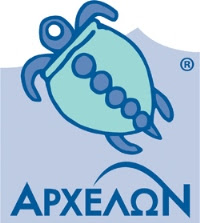The Internet is the information superhighway. This phrase has been used so often that it should be nominated for the Internet Cliché Award. People who go online are categorised into different groups, but in general they are looking for information. Whether for games, business, fun or anything else, the internet has provided us with information that has proven to be very useful.
In recent years, many people have learned the secrets of search engine optimisation. More and more websites have realised the impact articles have on traffic to their websites. Some have even created websites dedicated solely to providing articles that can be read by their website visitors and contain links that can lead to many websites related to the topics of the articles.
For example, the websites may contain many articles on a whole range of topics. When a website visitor reads the articles they have searched for, they may find a resource box at the end of the article that they can click on to go to the website that submitted the article. Of course, the article should be related to that website. For example, if the article is about changing tyres, the resource box may lead to a link to a website that sells tyres or car parts. You will normally find a resource box at the end of an article.
It includes the author's name, a brief description of the author, a short description of the sponsor's website and a link. If a reader likes what they read, they will tend to find out where the article is from in order to read more. The resource sheet is the link to the source of the article that entices the reader to visit the website and read or research more about the topic they are interested in.
But like the article itself, the resource sheet needs to be eye-catching to grab the reader's attention and interest. The resource box may only take up a small area, but if you provide the right keywords and content for your resource box, the reader will be even more encouraged to visit your website. Now we know what resource boxes are. What are the benefits of a good resource box?
First and foremost, it brings more visitors to your website. Many websites allow articles to be included on their websites because they can use the articles to populate their pages. They also get partnerships with other websites which can also be beneficial to them. For the sponsoring website, this means you generate traffic that can be counted as a potential customer when visitors click on your resource box.
So what would be good content for your resource box? Basically, it's about keywords, the right keywords that people are mainly searching for. You can find many tools on the internet that can help you determine the right keywords. Resource boxes can also utilise all the creativity they have. You only have a small space for your resource box, so make the most of it.
Try to grab your reader's attention with the contents of the resource box so they take a second look. Unlike TV adverts, you don't have any visual aids to make your point. But you do have the reader's imagination. With the right content, you can make the reader think and arouse their curiosity. Another tip is to use keywords that should relate to your website. Don't mislead your potential website visitors.
Build your credibility so that more people are enticed to visit your website and check out what you have to offer. Get visitors to click on your resource box by providing content that leaves a lasting impression. You only have one chance to impress your visitors, and hundreds of chances to put them off. Never underestimate the power of the resource box. They may be small, but they go a long way towards driving more traffic to your website.
A boring resource box will never achieve anything. Be fun and creative, but at the same time show that you have a lot to offer. Is it too much to ask to write something that won't fit in a paragraph? Yes and no, there are many tips and guides that can help you with this. The first step is to recognise how important a resource box can be in getting visitors to click on your link and be redirected to your website.






